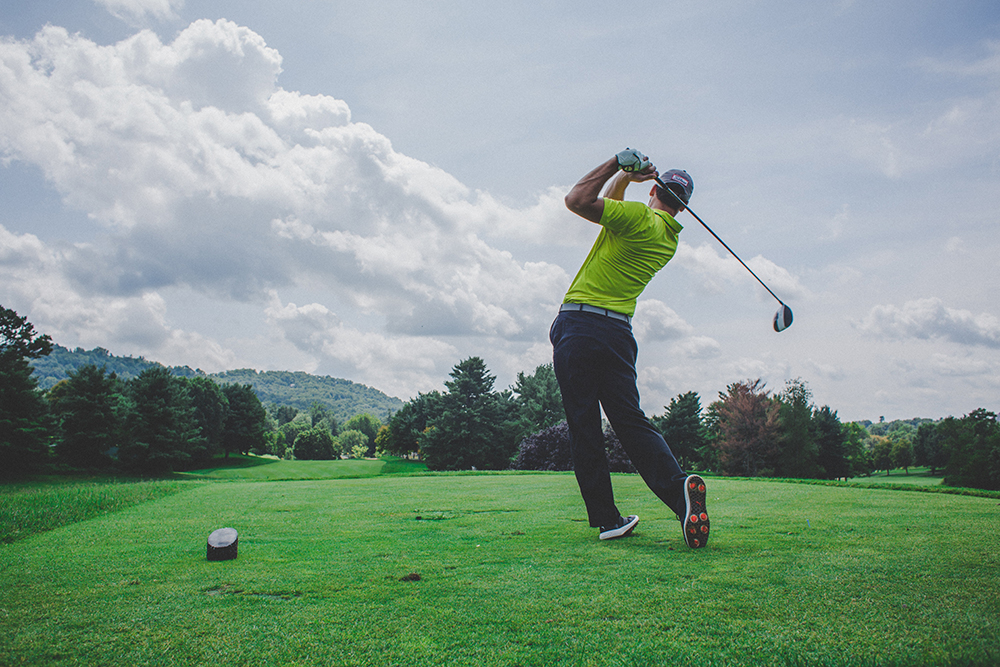
Although it is sometimes viewed—inaccurately—as a passive sport, golf is very demanding on a person’s body and can actually wreak havoc on one’s joints and musculoskeletal system, especially the knees. While golfers often appear calm and their swings usually look smooth and fluid, looks can be deceiving. Strength, flexibility, endurance, coordination and agility are just as important in golf as in other more “physical” sports.
The truth is: A normal golf swing exerts more force on the knees than jogging. In fact, studies show that it would be less stressful on your knees to jog the eighteen golf holes rather than actually to play them.
For comparison, here are some forces other sports and exercises exert on the knee:
· Biking – 1.3 x body weight
· Lunges –2.5 x body weight
· Forehand in tennis –3.6 x weight
· Tennis serve –3.8 x body weight
· Jogging –4.3 x body weight
· Golf –4.5 x body weight on forward knee and 3.2 on back knee
Kinesiologists describe the motion of a golf swing as “reverse underarm pattern,” a variation of the typical underarm pattern of bowling or a softball pitch. The goal is to create a stable center hub and use balance, coordination, stability, and strength to deliver a powerful swing. However, if any of these components are off it can result in a bad shot and increased risk of a knee injury.
Preventing a Knee Injury
Some best practices to avoid knee injury include:
· Properly fitting golf shoes with wide soles and spikes (or traction) for stability
· Maintaining an ideal body weight
· Proper stretching to keep muscles lithe and prevent stiffness and sprains
· Regular exercise that includes cardio and strength training to promote flexibility, balance, and endurance
Recovery from Knee Injury
If you do suffer from a golf-related knee injury, it’s important to see an orthopedic specialist and refrain from golfing until the injury is fully recovered. Continued golfing will only serve to reinjure the knee and prevent its recovery.
However, if you’re recovering from an injury, there are a number of other low impact exercises to help build up leg and knee strength including biking and swimming. Additionally, it’s important to vary your exercise routine by mixing up the types and level of stress on your knees. This will strengthen your legs and ultimately help to prevent or at least reduce the risk of a golf-related knee injury.
